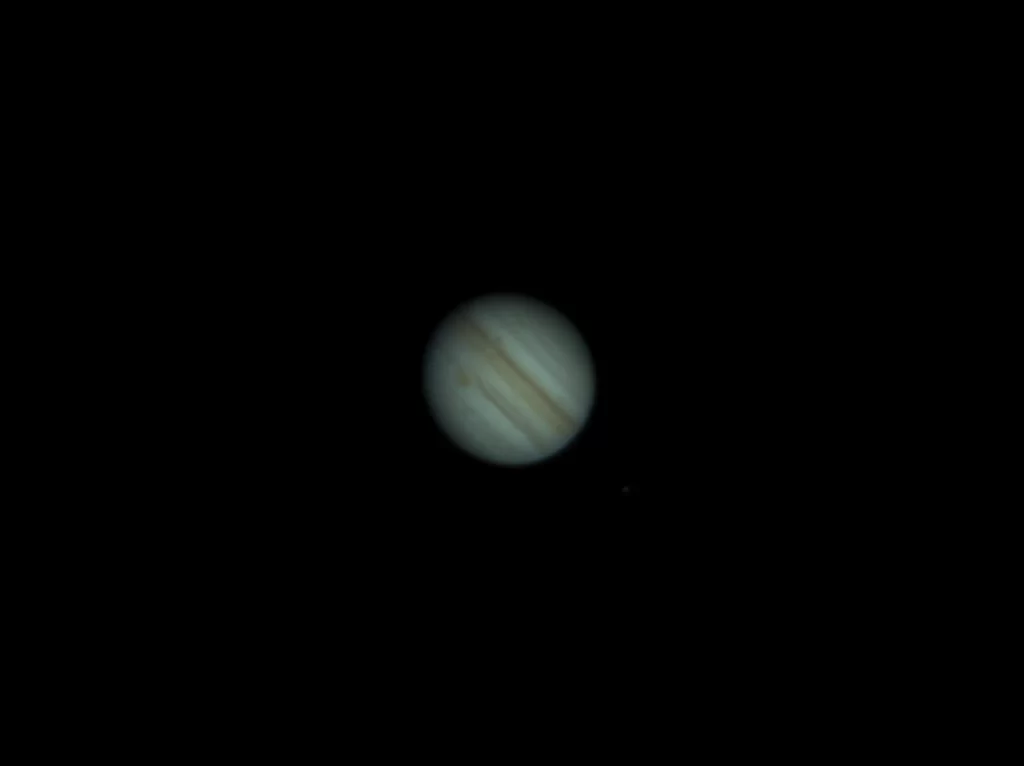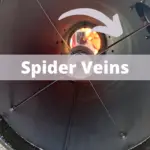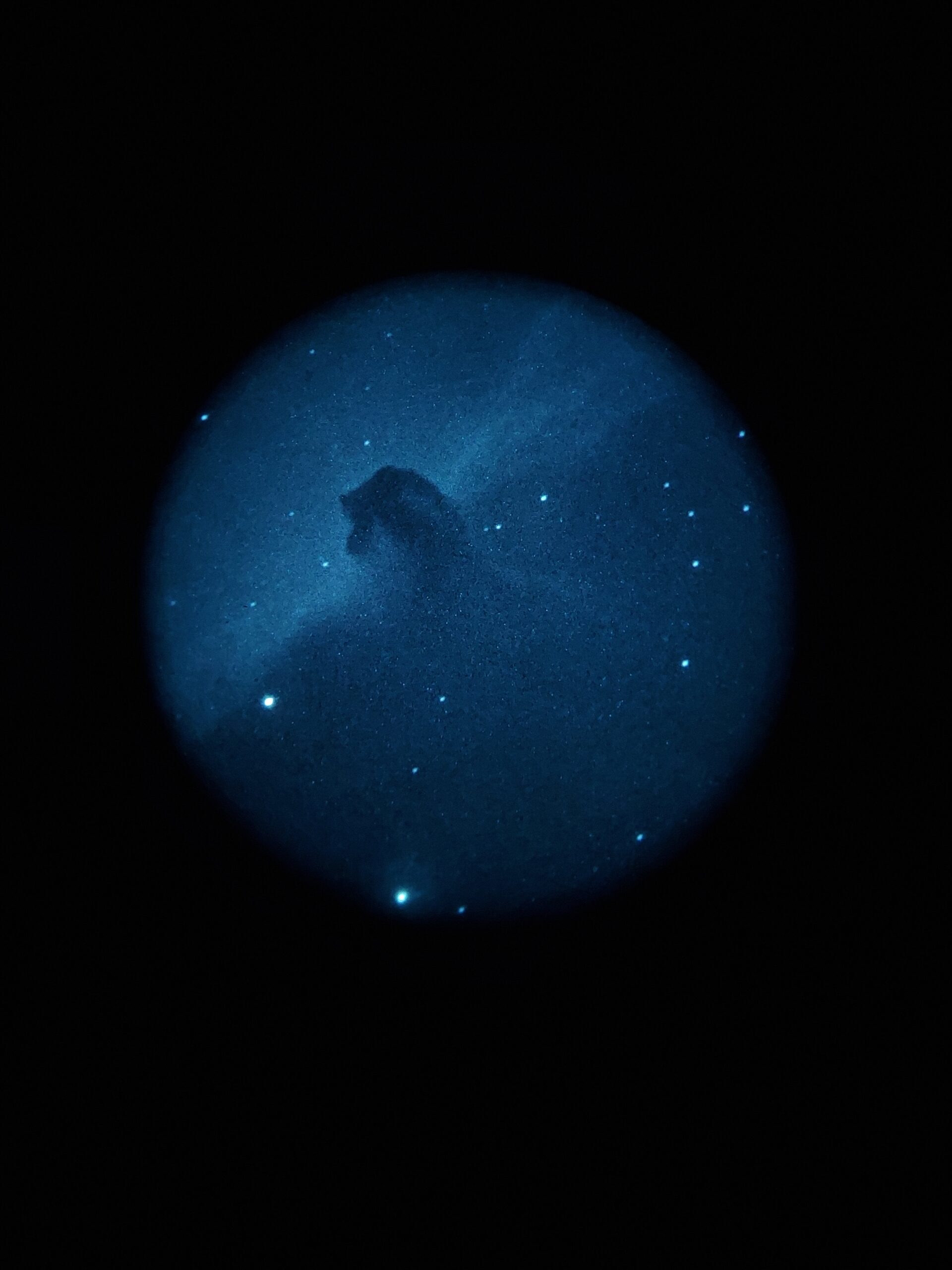Jupiter is one of the brightest objects in the sky and makes a great target for observing with your telescope.
The easiest way to find Jupeter is to find it with your eye first. Refer to a star map if you are unsure where to start. Jupiter is visible in the night sky for most of the year. When you have located a very bright ‘star’ , center it in your finderscope, then with low magnification observe the object. It should appear round and not twinkle.
Planets do not twinkle because they are reflecting light from the sun while stars twinkle because they are sending their own light to us.
Planets look different than stars through telescopes, not only because they do not twinkle, but because they are so much closer. Planets will look round, like a ball while stars will look like dots.
If you are unsure if you have located Jupeter, try looking at another bright object. Compare the objects to one another, you should notice the difference between the steady light of Jupeter and the twinkle of a star. If there is no distinct difference, you have likely not found the planet yet.
Jupeter does not have a solid surface, it is a gas giant. The surface that you will see is the top of the clouds of gas. If you have excellent seeing conditions you may be able to see the great red spot.
When you locate Jupeter switch from low magnification to higher magnification.
You will have the best results when Jupeter is higher in the sky, I like it to be at least twenty degrees above the horizon. The lower the object to the horizon the more atmosphere you will need to look through to see the planet. The gasses in the atmosphere may distort images, like looking through hot air coming off a sidewalk in the summer, it distorts the image.
Be sure to notice the moons. Jupiter has 4 Galilean moons that you will likely be able to see. You may see the moons as a dark spot if they are in front of the planet.
I had one night with exceptionally good conditions for seeing and I was able to make out the moons, the great red spot and even more of the storms on Jupiter. It was so amazing.

What magnification should I use to see Jupeter?
Once you find it, center it in a low power eyepiece. I like to use an 11mm eyepiece for observing Jupeter. If you cannot find it when you switch to the high power eyepiece, switch back to your lower magnification eyepiece and center it perfectly and tighten down all the knobs on your scope, then switch back to higher magnification.
If you have excellent seeing conditions you may be able to go all the way down to a 4mm, or a 4.7mm.
The magnification is determined by your focal length. If your focal length 1800 for example and you use a 5.5mm eyepiece, then you divide the focal length by your eyepiece to get the magnification, 327 in this case.
8 and 10 inch Dobsonians, my recommendation for beginners, have focal lengths of 1200mm and 1250mm. These numbers are great to remember when selecting and understanding eyepieces.
Magnification:
Telescope Focal Length ÷ Eyepiece Focal Length
With this formula start out with 30 to 50x and then increase your magnification as far as you can until you cannot get a crisp image. This is called useful magnification, the highest magnification that you can use while still getting a crisp image, with visible surface detail and pinpoint moons.
You will have to play around with different eyepieces until you find the perfect magnification for your scope in your current conditions. Better conditions allow for higher magnification.
The closer Jupeter is to the Zenith, the less atmosphere you will be looking through, so you may get clearer views in that position.
If you are building an eyepiece collection, I have a few suggestions in this post, How Many Eyepieces are Enough? In that post we discuss the best collection of eyepieces and how to avoid a large useless collection.
Can you see Jupeter with the naked eye?
Jupeter is the 4th brightest object in the sky. Astronomers measure brightness in magnitude. Jupiter’s apparent magnitude changes with its distance from the sun, but it remains very bright throughout the year.
Jupiter can often be seen in a constellation, making it easier to identify. This site will give you the location of the planet inside each constellation. This can also be helpful as you learn constellations.
As you become more familiar with the constellations you will notice an extra bright ‘star’ in a constellation that should not be there. That is a planet, usually Jupeter or Venus, the brightest planets that we observe from earth.
Observing planets without any aids is a wonderful introduction to astronomy. Locating objects that you have learned about for years is exciting and opens up a whole new world that is easily accessible every night.
How do you find and identify planets with a telescope?
With the right equipment it is possible for ametrues to observe Mercury, Venus, Mars, Jupiter, Saturn, Uranus and Neptune. Some of these planets are very exciting to see through a telescope. I have seen the polar ice on Mars and have shown dozens of people the rings of Saturn.
Finding the planets with your telescope requires a knowledge of the night sky. The movement of the planets means that they rise and set like the sun. Understanding their characteristics make it easy to identify some planets, but some are quite difficult to find.
Venus
The brightest planet in the night sky, Venus is the easiest to identify. Venus rises and sets close to the sun, so it is below the horizon quickly after sunset and before sunrise. This characteristic also makes it easier to identify. If it is midnight, that bright star isn’t Venus.
Jupiter
Jupiter is just a bit less bright than Venus, it gives a steady light and can be found before it gets completely dark if it is not cloudy.
Saturn
In this season Saturn is right between Venus and Jupeter, making it a very easy planet to locate. Their relative positions change, but I use the other two to find this. It looks slightly red.
Mars
Mars will be a red dot, there are months of the year when planets are not visible, so if you see Mars on your Sky Map app, it will appear red with the naked eye if you know where to look.
Mercury
Mercury is visible even in the daytime with a telescope. When Mercury is closest to Earth, it is possible to observe its phases. Mercury is a difficult target because it is so close to the Sun. It cannot be seen in the dark sky, only at dawn and dusk.
Uranus and Neptune
I have never been able to find Uranus or Neptune without the aid of Sky Map. When you get close to the position with a low power eyepiece, switch to a high magnification. Even with GoTo, you will likely still need to search around for these planets. When you are searching you may see an out of focus star (a planet looks like a bloated star). It is a hunt to find these objects, and when you do they will be pale blue or yellow and featureless.
I use an app called Sky Map to locate objects. I use it to check to see what is up above the horizon tonight and to identify things that I am not yet familiar with.
If you have GoTo computers on your telescope you may still need a Sky Map to find stars for your alignment while you are learning the sky.
Paper sky maps are available and useful when learning the sky, but an app is the most convenient for identifying objects in the night sky. These apps can be fun even if you do not have a telescope. Visual observing is still astronomy.




